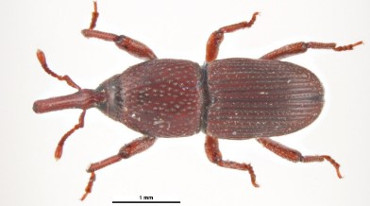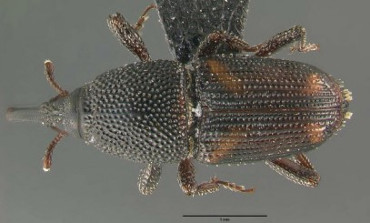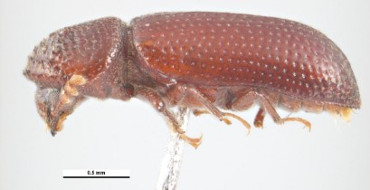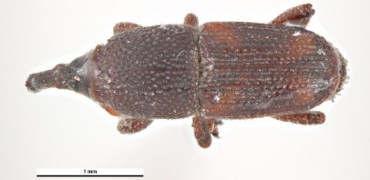By Sara Bauder
Grain storage is a key component in getting your crop to market. If you are holding over grain from last fall, be sure it is stored properly, and kept cool and dry. Aside from watching bins for spoilage, moisture, and temperature changes, make sure you are looking for signs of pest infestation. Seed borne diseases and insects can easily infest summer-stored grains and cause many problems. Maintaining a cool (<50°F during the summer months) and dry (corn: 13-14%, soybean: 11%, wheat: 13.5%) bin is key to avoiding these issues but knowing the warning signs and checking regularly is a good practice.
Storage Fungi
Storage fungi refers to fungal pathogens that contaminate the grain surface in the field during harvest and grain transportation or develop on the grain during storage when conditions are conducive, leading to grain spoilage. Storage fungi development on the seed leads to seed rotting, reduced quality and nutritional value, and some fungi produce mycotoxins that are poisonous to humans and livestock. Grain affected by storage fungi maybe discolored and sometimes may have a musty odor. Grain with extensive fungal growth may have varied discoloration including white, pink, black, blue-green/olive colors.
Several fungi can cause grain spoilage in storage, but the most common ones include Penicillium spp, Aspergillus spp, Alternaria spp, Fusarium spp, Rhizopus stolonifera, Mucor spp, and others. These pathogens are abundant in the environment but development on the seed maybe enhanced by contaminated equipment or bins, mechanically damaged seed, and insect feeding. The most important risk factors for storage fungi to develop are grain moisture content, temperature in the grain bin, and length of grain storage. Naturally, the longer the grain is stored, the more prone it becomes to fungal infection while in storage, however, this process is dictated by the storage conditions.
Common Stored Grain Insect Pests of Corn
There are several species of insects that feed on stored grain. Both the immature (larval) and adult stages of stored grain beetles are capable of causing damage to grain, while only the larval stage of the stored grain moths cause damage. These insect pests can be grouped based on whether they are internal feeders or external feeders. Internal feeders feed within the kernels while external feeders will consume grain dusts, cracked kernels, and other grain debris. Below are the common internal and external stored grain pests. In addition to these, other species including the foreign grain beetle and hairy fungus beetle may be observed in a bin. These beetles are feeding on the molds or fungi growing on the grain.
INTERNAL FEEDERS
Weevils
Of the internal feeders, weevils (Figure 1, Figure 2, and Figure 3) are generally given the most attention because they are among the most destructive pests of stored grain. The larvae of grain weevils develop within the kernels, and when infested grain is left undisturbed for long periods of time can cause nearly complete destruction. Adult weevils are easily distinguished from other beetles by their elongated snouts.

Figure 1. Granary weevil (aka wheat weevil). Courtesy: Pest and Diseases Image Library, Bugwood.org

Figure 2. Maize weevil. Courtesy: Gary Alpert, Harvard University, Bugwood.org

Figure 3. Rice weevil. Courtesy: Pest and Diseases Image Library, Bugwood.org
Lesser Grain Borer
The lesser grain borer (Figure 4) is a pest of a wide variety of grains. The larvae and adult of this pest are damaging. The larvae of this pest are unable to infest undamaged kernels. In addition to kernels, the larvae are also able to develop on grain meal.

Figure 4. Lesser grain borer. Courtesy: Pest and Diseases Image Library, Bugwood.org
Angoumois Grain Moth
The larvae of the angoumois grain moth (Figure 5, adult moth) are typically not a pest of shelled grain. However, the larvae are a pest of ear corn and can infest the corn before it is harvested. The larvae feed inside kernels and cause an unpleasant smell. During warm falls, several generations of the moth can be completed resulting in significant damage.
Click here to see more...